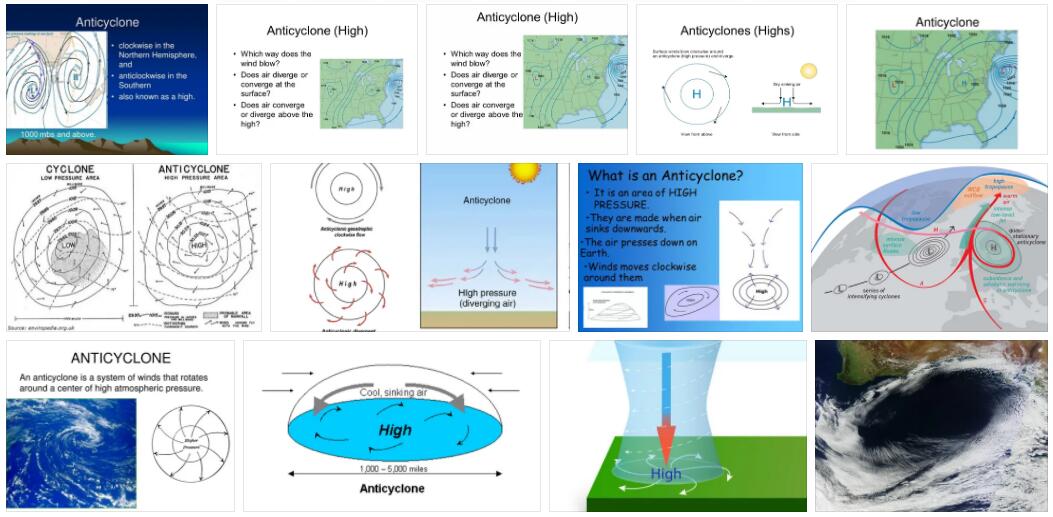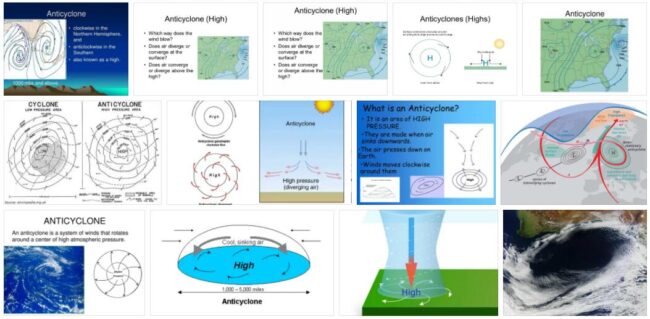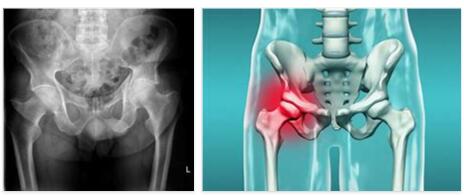The idea of anticyclone is used in the field of meteorology. The concept refers to an atmospheric phenomenon that involves, in the northern hemisphere a high pressure zone with the wind circulating in the same direction as the needles of the clock, while in the southern hemisphere the reverse occurs. The anticyclone, generally, makes the weather clear, stable and without rains.
In an anticyclone, the atmospheric pressure is thus higher than the pressure of the surrounding air. The air in the anticyclone moves downward from the highest layers of the atmosphere to the Earth’s surface. This phenomenon, which is called subsidence, makes it difficult for clouds to form, contributing to good weather.
The drop in air can be due to different reasons. When the movement is produced by an advection process in the elevated area, it is called a dynamic anticyclone. The weather, in these cases, is hot and dry, with a strong presence of the sun.
If the air mass falls due to being at a lower temperature than the environment, it is a thermal anticyclone. The descent of the air increases the atmospheric pressure and the temperature falls with greater intensity in the low areas. The weather thus becomes cold, although dry and sunny.
The progress of an anticyclonic-type circulation is called anticyclogenesis. Instead, the opposite process is called cyclogenesis (circulation is cyclonic in the atmosphere).
Sailing is one of the activities that is most affected by anticyclones, since they cause a shortage of wind and force sailors to move considerably north or south, to take advantage of the direction of the wind, according to their destinations.
Between 30 and 35 degrees south and north latitude, what we could call subtropical latitudes, it is normal to find anticyclones of apparent permanence in the same region. It is the part where the Hadley cell descends, an atmospheric circulation pattern that gives rise to the winds from the east and the trade winds in the tropics.
In fact, in the areas near the equator, where the Coriolis effect is not strong (which is observed when a body moves with respect to a reference system that is in full rotation), the air has a direct circulation.
The heat is lower in the lower levels of the atmosphere, and this characteristic of temperature opens the doors to what is known as the intertropical convergence zone, in which the Archimedean principle (belongs to the field of physics, and proposes that a body at rest, totally or partially submerged in a fluid, suffers a vertical thrust with a weight equal to the mass of the displacement, that is, the volume of fluid displaced) and convergence (the collision of two air flows horizontal) are the causes of the elevation suffered by the warmer air.
South Atlantic anticyclone
It is a subtropical zone found in the southern Atlantic Ocean, and is also known as the Santa Elena anticyclone. It is important to note that its position is not permanent, nor is its intensity, but rather that in a fairly defined area an anticyclone usually appears on the weather charts used to describe the average monthly pressure.
The approximate coordinates are 25 ° S 15 ° W, and a wide range of high atmospheric pressure is usually seen there. The two names for this anticyclone respond to its proximity to the island of St. Helena, the only land space present in the vicinity, and to the fact placed in the ocean Atlantic.




